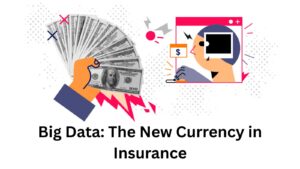In 2025, the insurance landscape is changing fast. This shift is due to new technology, changing consumer needs, and new regulations. Here’s an in-depth look at the top 10 trends shaping the future of insurance:

1. Artificial Intelligence (AI) and Automation in Insurance
Contents
- 1 1. Artificial Intelligence (AI) and Automation in Insurance
- 2 2. Parametric Insurance Models
- 3 3. Cyber Risk Coverage Expansion
- 4 4. Environmental, Social, and Governance (ESG) Integration
- 5 5. Usage-Based Insurance (UBI)
- 6 6. Embedded Insurance Solutions
- 7 7. Climate Risk Mitigation Strategies
- 8 8. Digital-First Business Models
- 9 FAQs
- 9.1 1. What are the key insurance trends shaping the industry in 2025?
- 9.2 2. How does Agenzee support insurance organizations in managing these trends?
- 9.3 3. What are the benefits of adopting parametric insurance models?
- 9.4 4. How is AI transforming the insurance industry?
- 9.5 5. What role does ESG integration play in the future of insurance?
- 9.6
Overview: AI and automation are changing the insurance industry. They make operations like underwriting, claims processing, and fraud detection easier and faster.
Benefits:
- Efficiency: AI-driven claims assessment reduces settlement time from weeks to hours.
- Fraud Detection: Machine learning algorithms identify fraudulent claims in real-time.
- Customer Experience: AI chatbots and virtual assistants offer round-the-clock help. They also give instant policy suggestions.
- Cost Reduction: Automation minimizes manual work and human errors, increasing profitability.
Tools Supporting This Trend:
- Agenzee: AI-powered license management software for agencies, carriers, and MGAs.
- IBM Watson: AI-powered underwriting and claims automation.
- UiPath: Robotic Process Automation (RPA) for policy management.
- ChatGPT: Customer service automation for insurers.
2. Parametric Insurance Models
Overview: Parametric insurance pays out when specific triggers happen, like natural disasters. It doesn’t wait for loss assessments.
Benefits:
- Faster Claims Payouts: Payouts are based on pre-agreed conditions, ensuring quick compensation.
- Reduced Administrative Costs: No need for lengthy claims investigations and manual loss assessments.
- Climate Risk Coverage: Addresses financial risks associated with climate-related events.
Tools Supporting This Trend:
- Árbol: Parametric insurance for climate and weather risks.
- Descartes Underwriting: AI-based parametric insurance solutions.
- NeuralMetrics: Real-time event monitoring for parametric payouts.
3. Cyber Risk Coverage Expansion
Overview: Cyber threats are on the rise. This leads to a growing need for cyber insurance. These policies help protect businesses and individuals from financial losses. They cover issues like data breaches, ransomware attacks, and digital fraud.
Benefits:
- Risk Mitigation: AI-driven tools assess cyber risks. They help insurers get better at underwriting and cut down on claim costs.
- Policyholder Protection: Offers comprehensive coverage against evolving cyber threats.
- Regulatory Compliance: Ensures adherence to data protection regulations like GDPR and CCPA.
Tools Supporting This Trend:
- BitSight: Cyber risk scoring for insurers.
- Corvus Insurance: AI-driven cyber risk assessment.
- SecurityScorecard: Cybersecurity ratings for underwriting.
4. Environmental, Social, and Governance (ESG) Integration
Overview: Insurers are changing their policies. They now focus on climate risk management, ethical investing, and clear regulations. This helps them meet global sustainability goals.
Benefits:
- Climate Risk Management: Helps insurers manage exposure to environmental disasters.
- Regulatory Compliance: Ensures compliance with global sustainability laws and reporting frameworks.
- Policyholder Loyalty: Attracts customers who prefer insurers supporting sustainability and ethical business practices.
Tools Supporting This Trend:
- Moody’s ESG Solutions: ESG risk analytics for insurers.
- Sustainalytics: ESG ratings and regulatory compliance.
- ClimateWise: Climate risk advisory for insurers.
5. Usage-Based Insurance (UBI)
Overview: UBI sets premiums by looking at how a person drives. It doesn’t rely on fixed factors like age or credit score.
Benefits:
- Fair Pricing: Allows safer drivers to pay lower premiums based on actual behavior.
- Cost Savings: Policyholders prefer pay-as-you-drive models to avoid high fixed premiums.
- Safer Driving: Promotes responsible road behavior and accident prevention.
Tools Supporting This Trend:
- Cambridge Mobile Telematics: Driving behavior analytics.
- LexisNexis Telematics Exchange: Connected car data for insurers.
6. Embedded Insurance Solutions
Overview: Embedded insurance adds coverage when you buy a product or service. This means you don’t need to buy a separate policy.
Benefits:
- Convenience: Provides instant coverage at the point of sale.
- Market Reach: Allows insurers to tap into new customer bases.
- Risk Mitigation: Enhances customer trust by providing coverage at the point of sale.
Tools Supporting This Trend:
- Cover Genius: Global embedded insurance solutions.
- Boost Insurance: API-driven embedded insurance platform.
7. Climate Risk Mitigation Strategies
Overview: Insurers are evaluating and controlling financial risks tied to climate change events.
Benefits:
- Risk Management: Helps insurers price policies more accurately and reduce underwriting losses.
- Regulatory Compliance: Ensures adherence to climate-related insurance laws and ESG standards.
- Customer Trust: Boosts credibility and attracts environmentally responsible clients.
Tools Supporting This Trend:
- Jupiter Intelligence: Climate risk analytics.
- AXA Climate: Climate insurance solutions.
8. Digital-First Business Models
Overview: A digital-first approach focuses on tech-driven insurance solutions. It provides smooth online experiences using AI, automation, and self-service platforms.
FAQs
1. What are the key insurance trends shaping the industry in 2025?
In 2025, the insurance industry is changing fast. Technology is advancing, and consumer expectations are shifting. Key trends include:
AI and Automation: They streamline underwriting, claims processing, and fraud detection. They also improve compliance management.
Parametric Insurance Models: They provide payouts when specific events happen. For example, this can include extreme weather events.
Cyber Risk Coverage Expansion: Addressing the growing demand for protection against cyber threats.
ESG Integration: Align policies with sustainability and ethical business practices.
Usage-Based Insurance (UBI) offers tailored pricing based on how you drive.
Embedded Insurance Solutions: You get insurance right when you buy products or services.
Climate Risk Mitigation Strategies: Evaluating and lessening financial risks from climate change events.
Digital-First Business Models: Prioritizing technology-driven solutions for enhanced customer experiences.
Health and Wellness Incentives: Rewarding policyholders for maintaining healthy lifestyles.
Regulatory Adaptations: Adapting to evolving insurance laws and compliance requirements.
2. How does Agenzee support insurance organizations in managing these trends?
Agenzee helps insurance carriers, agencies, and MGAs manage licensing and appointments. Key features include:
AI-Powered Automation: Automate license checks, track renewals, and manage appointments for real-time compliance.
NIPR Integration: We sync data daily with the National Insurance Producer Registry (NIPR). This keeps our information accurate and current.
Regulatory Insights: We provide alerts and insights on regulatory changes. This helps organizations stay compliant.
Interactive Dashboards: These tools help you see and manage licensing statuses in different states.
Mobile Accessibility: Enabling access to compliance data on the go through mobile applications.
These features make operations smoother. They cut down on admin tasks and lower compliance risks. This helps organizations focus on growth and efficiency.
3. What are the benefits of adopting parametric insurance models?
Parametric insurance models offer several advantages:
Faster Claims Payouts: Payouts happen quickly because of set triggers, like certain weather events. This means you get compensation faster.
Lowered Admin Costs: Cuts out long claims checks and manual loss evaluations.
Enhanced Accessibility extended: Provides coverage in regions with limited access to traditional insurance.
Expanded Coverage: Works well for agriculture, travel, and supply chains. It protects against specific risks.
Parametric insurance models use real-time data. This makes risk management more efficient and clear.
4. How is AI transforming the insurance industry?
Artificial Intelligence is revolutionizing the insurance sector by:
AI-driven claims assessment speeds up processing. It cuts settlement time from weeks to just hours.
Improving Fraud Detection: Machine learning algorithms identify fraudulent claims in real-time.
Enhancing Customer Experience: AI chatbots and virtual assistants provide 24/7 support and instant policy recommendations.
Reducing Operational Costs: Automation minimizes manual work and human errors, increasing profitability.
Enhancing Risk Assessment & Underwriting: AI-driven predictive models help insurers price policies more accurately.
These advancements lead to more efficient operations, improved customer satisfaction, and better risk
5. What role does ESG integration play in the future of insurance?
ESG integration is growing more important in the insurance industry.
Regulatory Compliance: Governments and industry regulators want ESG disclosures and sustainability reports.
Climate Risks Are Rising: Insurers face more natural disasters, wildfires, and floods. These events are pushing them to rethink how they assess risks and write policies.
Investors and consumers want insurers that focus on sustainability, diversity, and good governance.
Insurers that care about ethics and sustainability are shifting to:
Green bonds
Low-carbon portfolios
Impact investments
By aligning with ESG standards, insurers can build trust, attract investors, and gain a competitive edge in the market.
If you have any more questions or need further information, feel free to ask!


